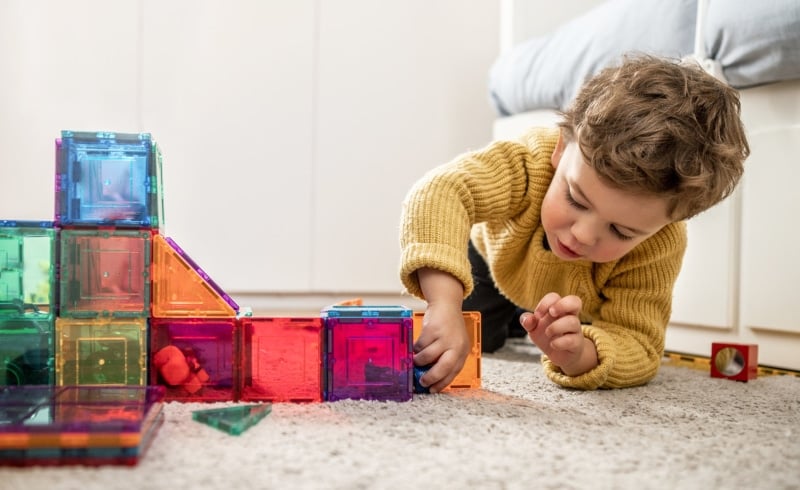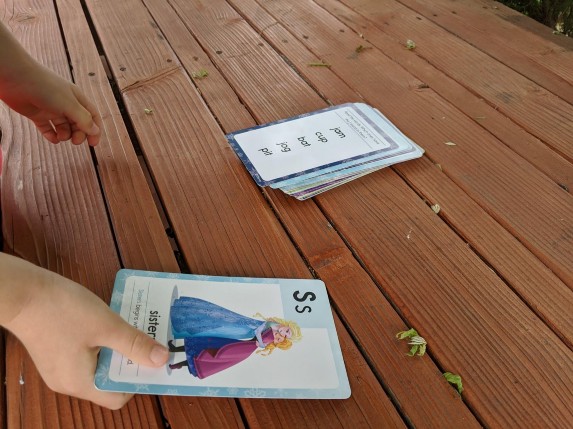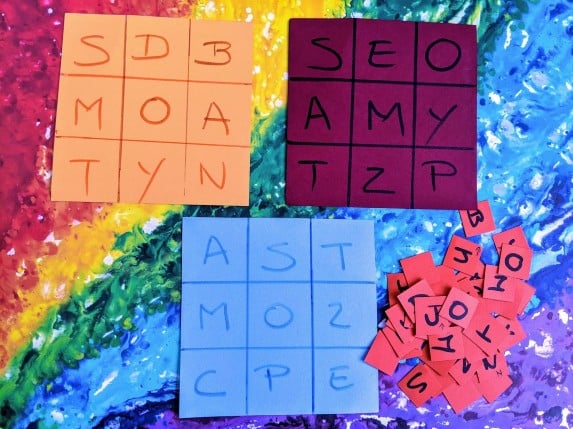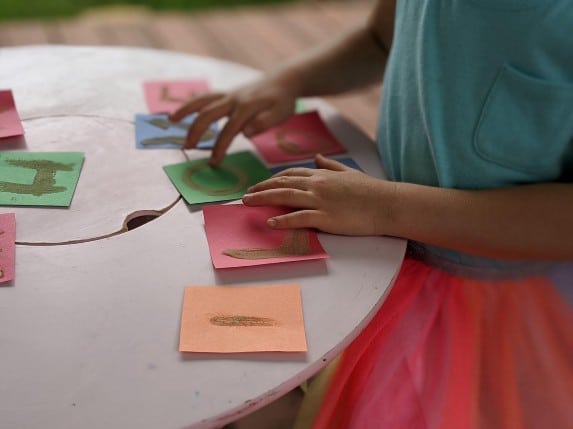3 Personalized Learning Games You and Your Child Will Love
Posted by admin on

I am a mother of two young girls stuck at home, like most of us, because of COVID-19. With our kids missing out on school it is easy to worry that we’re not doing enough. These 3 quick and simple games are a great distraction for parents and children alike — and as a bonus, they count towards that homeschooling we’re all supposed to be doing.
Gold stars for everyone with these easy games!
The Alphabet Scavenger Hunt

Frozen flashcards
What you need
Alphabet flashcards.
You can either make the alphabet flashcards, print them using free printables, or buy them. We used Frozen flashcards. It was a hit!
How to play
- A player draws a letter flashcard from the deck.*
- The child reads, out loud, the letter and its associated sound (for example “A, ah”).
- The entire family searches in the house for something starting with the letter that was drawn. For example, for the letter “T,” the players might find tape or a toy.
- Continue to take turns to draw cards.
*You can adjust the skill level easily. For example, with younger kids start with a small deck of cards made up of the letters in your child’s name and the following common letters: E, A, R, I, O, T, N, S, L, C.
My personal experience
My daughter didn’t know many letters at first. As we played we noticed she was steadily picking them up. Two years later, she is asking us to find words starting with letters of her choice.
Why I like this game
- We can play this game everywhere (inside, outside, in the car, on video calls).
- It can last 5 minutes or more depending on everybody’s mood.
- It helps children to work on their word recognition and phonics.
Letter Bingo

Personalized, homemade letter bingo game for my daughter, Amy
What you need
Colored paper, ruler, markers, and scissors to make your own Bingo game. Make the boards and letter squares as shown in the picture above. Leave a few squares blank for “magic letters”. Or you can buy sets on Amazon.
How to play
- Each player has a bingo card laid in front of them.
- The child draws a square from the pile and says the name of the letter and its associated sound out loud.
- When a player draws a letter that is on their bingo card, the player places the square on the bingo card; if not, the square is returned to the draw pile.
- There are blank squares in the pile. They correspond to “a magic letter” that can go anywhere on the Bingo card to help complete a bingo pattern.
- The first player to complete a bingo pattern wins (a line with three letters in a diagonal, horizontal, or vertical row). The player should shout ‘Bingo!’ if they make the line.
You can easily adjust the complexity of this game to suit your child:
- Level 0: use only the letters of your child’s name (letters can appear twice) on the bingo card and in the pile.
- Level 1: use only the name letters on the bingo card. Put 2 or 3 additional squares with the more common letters in the pile (E, A, R, I, O, T, N, S, L, C).
- Level 2: use the name letters plus one of the most common letters of the alphabet (as above) on the bingo card. Put 2 or 3 additional letters in the pile.
- Level 3: use the name letters and the least used letters in the alphabet (J, Q, X, and Z) to complete the bingo card. Put the entire alphabet in the pile.
My personal experience
My daughter liked that I had created a game for her. She loved getting the magic letter and beating me!
Why I like this game
- It takes 5 minutes to make.
- It can last 5 minutes or more depending on everybody’s mood.
- It helps with letter recognition.
Montessori Sandpaper Letter Cards

Personalized homemade sandpaper letter cards
Sandpaper letter cards use a textured surface for letter shapes on a smooth card.
What you need
Sandpaper letter cards like these ones or you could make your own using glue and sand.
How to play
In general, encourage your child to trace and sound out the letters as you play. Here are some ideas but are lots of ways to play with these cards.
1.Tracing letters (Levels 0–1)
Children trace the letters with their fingers by following the sandpaper texture.
You can start with the letters of their name, then the most common letters (E, A, R, I, O, T, N, S, L, C).
2. Identifying letters (Levels 1–2)
Choose three letters and ask questions such as “Which one is the letter A?” You might start with the letters of their first name, and then the most common letters.
3. Spelling words (Level 3)
- Can you spell your name using the letters?
- Choose three letters and use a structure such as “Look at these letters. [sound them out] Which letter does “cat” start with?”
- Select some consonants and vowels. Make up some simple words such as cat, rat, and cot. Help your child sound them out (c-a-t, cat) and then ask simple phonics questions such as “Which word spells cot?”
4. Writing a message (Level 4)
Create sentences that resonate with your child (Hi! I am [child’s name]).
My personal experience
It was a nice craft experience. Our 5-year old now quizzes us on words she learned playing this game.
Why I like this game
- It uses both muscular and visual memory.
- Children like touching, so they are naturally drawn to follow the texture.
- There are multiple ways to play with the same deck.
What educational games do your children like? I’d love to hear from you.
About the author: I am a mother of two girls. I had dyslexia and struggled to learn how to read. My older daughter was considered a “slow learner” at the age of three, so I transferred her to a Montessori school and started to gather ideas and tools to help her at home. A year later, my daughter read her first 12-page easy-to-read — or CVC (Consonant Vowel Consonant) — book before turning four and a half years old. I am using this experience to launch MyLibook, an inspiring, personalized, easy-to-read book series.
As an Amazon Associate, I earn from qualifying purchases. This page may contain affiliate links from various companies, which means if you click on a link and make a purchase I earn a small fee. The little money I may make will be donated to the Reading Partners association. There is no extra cost to you.
—
Previously published on “A Parent Is Born”, a Medium publication.
—
***
If you believe in the work we are doing here at The Good Men Project and want to join our calls on a regular basis, please join us as a Premium Member, today.
All Premium Members get to view The Good Men Project with NO ADS.
Need more info? A complete list of benefits is here.
Talk to you soon.
—
Photo credit: istockphoto.com
The post 3 Personalized Learning Games You and Your Child Will Love appeared first on The Good Men Project.

